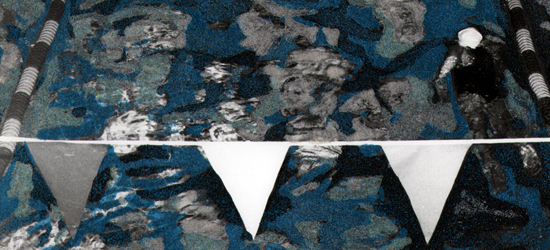Managing the Time You Can’t Control
Posted on October 6, 2011 | posted by:Read Donella Meadows’s Thinking In Systems and you can’t help but notice how just about everything connects to a scheme, intentional or not. For instance, oceans, lakes, swimming pools; from a human perspective, we are not merely swimming in them, we are participating in an intricate system, with various loops and balances regulating use of each reserve—stock—of water. Never mind ecosystems and shipping systems, let’s contemplate waterways as recreation. Inflow: swimmer. Balancing loop: comfort with getting wet, ability to regulate breathing, muscle tone (though muscles wax and wane, so this may serve as a counterbalance as well), a base degree of experience. Typical limiting factors in each swim-system are less commonly denominated: for an ocean, factors include tide levels, water and air temperature, wave height, lifeguard proximity. Unavoidably important as well is manufacture of swimwear. Bikinis are fine for the shoreline, but not so reliable once in the water, and may affect the speed(o) with which the swimmer swims.
A lake’s counterbalance might include weed content, presence of sludge (and slugs!), water temperature. No lifeguard is expected for the lake-swim experience, as the stock (fresh water) is typically calm, and the expectation is more about visiting a “natural” environment than the social and athletic scene of the oceanfront.
But the system with the most intricate balances and counterbalances—and perhaps this has something to do with being a man-made environment—is the lap pool. An example: the Cole’s Natatorium at New York University. Components that are typically stable include water temperature, lap length and width, explicit rules and regulations such as swimming in a circular path within one lane, no passing till the end of the lane, no hair uncapped if worn below the shoulders (to prevent the drain from clogging and a total collapse of the system), even no expectorating, or other emissions, perhaps to avoid angry confrontations. Limiting factors include number of swimmers in a lane, which is often connected to time-of-day, and, due to resulting crowding, lane selection. This may be the single most suboptimizing piece of the entire system. If a “slow” swimmer is in the “medium” lane, oscillation occurs, sending a shock-wave through the system, resulting in delays and frustration. Medium-paced swimmers then seek alternative, and often inappropriate lanes, causing further delays, more lane switching, and so on, until the system nearly implodes. The lifeguard rarely enforce the rules—the flows—due to another intricate system involving hiring of inexperienced lifeguards. Self-regulation is left to the swimmers who partake of this chlorinated stock. And regulation does occur, usually without any conscious effort. Swimmers become exhausted, mentally and physically, and, at the same time, in conjunction with the time-of-day loop, the lunch hour comes to an end. The very time-constraints that hampered the flow re-regulate the flow. The lanes clear, the number of water-users diminish, the system is restored to its original purpose. Self-regulation flows naturally in this unnatural environment.
Self-regulation seems like a sensible segue into the another book title involving the intricacies of interconnectivity: John Thackara’s In the Bubble provides countless possibilities for interpreting the purpose of swimming systems, including its convivial nature (chapter 6), and the notion that design is responsible, not necessarily for creating “new,” but for excavating old [systems] and recombining them in new contexts to solve current problems (chapter 10). Another compelling illumination of the place of such systems is a discussion of Nemawashi (chapter 2), understanding how something works, thereby building a trustworthy communication. An example of this in action is NYCSwim.org, whose mission is to “promote the health and well-being of children and adults through swimming; create stakeholders with a vested interest in the local waters, and revitalize open water swimming in the New York region as a whole.” Dip your toe in the water, any kind, get to know where it comes from, and you may help reframe or stabilize a system we have relied on and might need to continue using for millennia. See how it flows.
